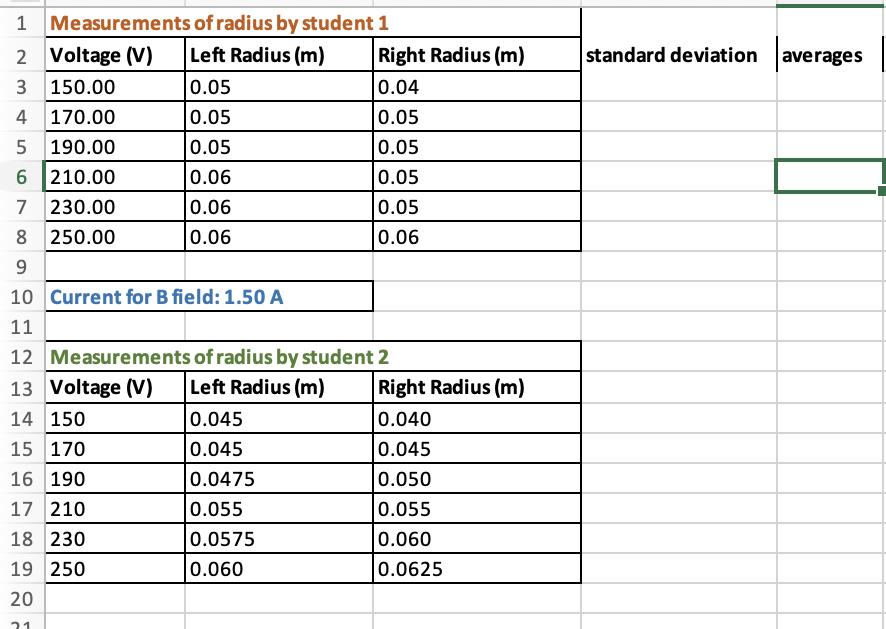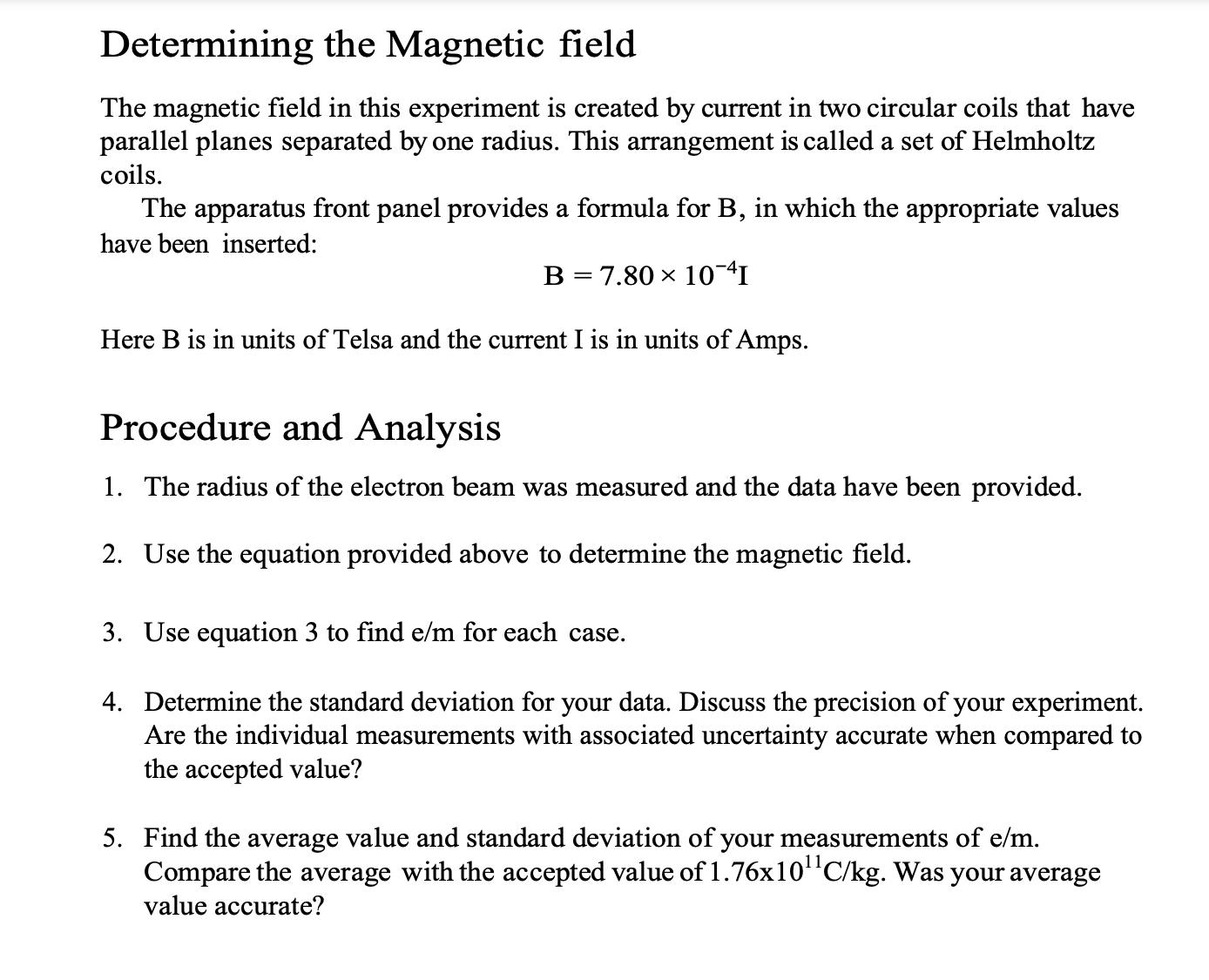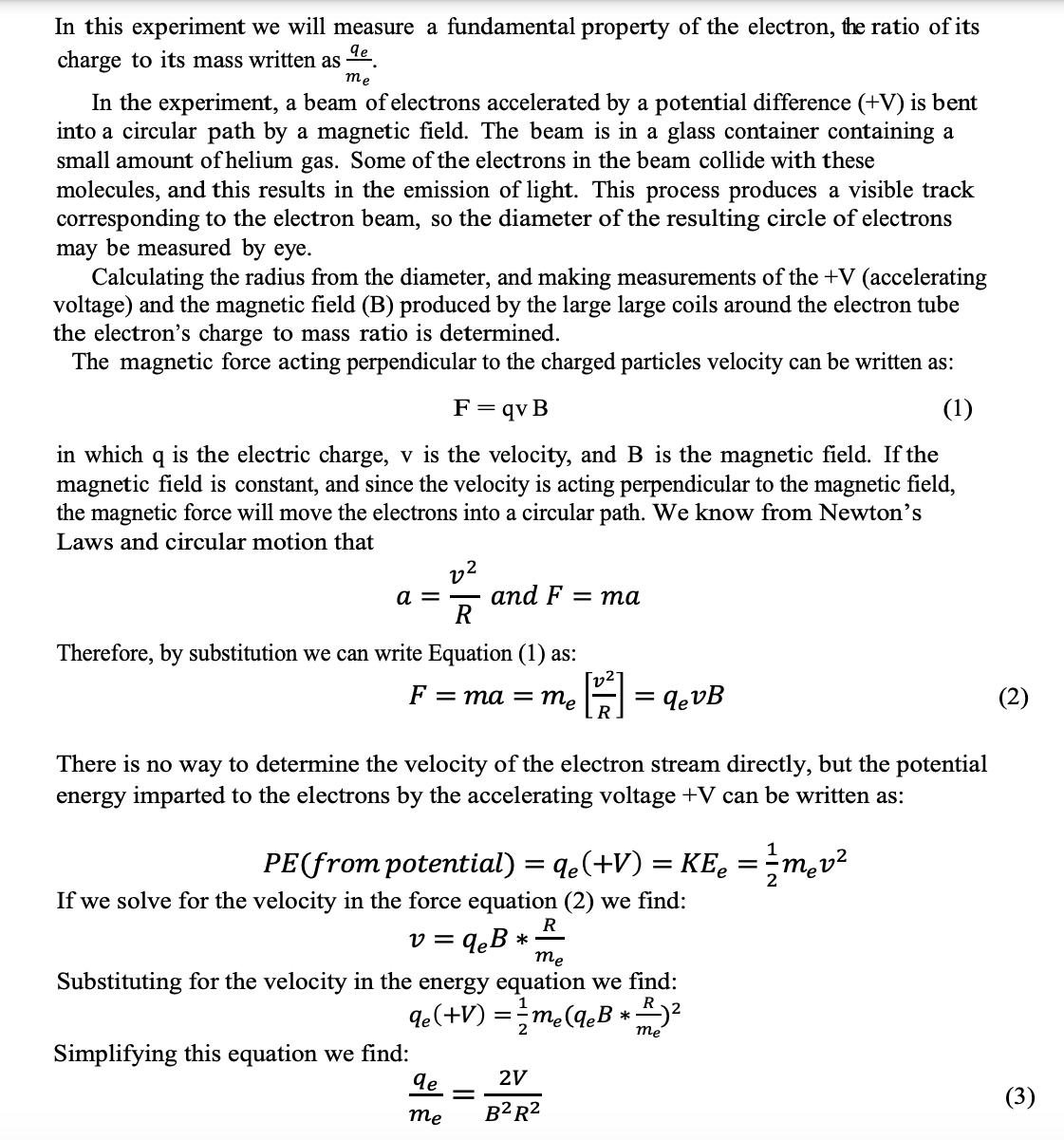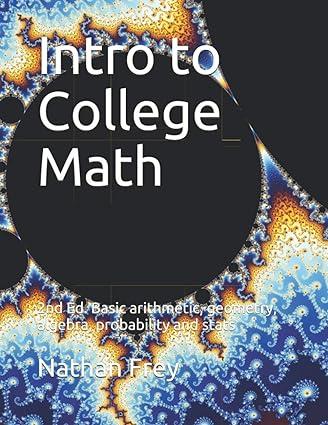Answered step by step
Verified Expert Solution
Question
1 Approved Answer
Measurements of radius by student 1 Left Radius (m) 0.05 0.05 0.05 0.06 0.06 0.06 2 Voltage (V) 3 150.00 4 170.00 5 190.00



Measurements of radius by student 1 Left Radius (m) 0.05 0.05 0.05 0.06 0.06 0.06 2 Voltage (V) 3 150.00 4 170.00 5 190.00 6 210.00 7 230.00 8 250.00 9 10 Current for B field: 1.50 A 11 12 Measurements of radius by student 2 13 Voltage (V) Left Radius (m) 14 150 0.045 15 170 0.045 16 190 0.0475 17 210 0.055 18 230 0.0575 0.060 Right Radius (m) 0.04 0.05 0.05 0.05 0.05 0.06 19 250 20 21 Right Radius (m) 0.040 0.045 0.050 0.055 0.060 0.0625 standard deviation averages Determining the Magnetic field The magnetic field in this experiment is created by current in two circular coils that have parallel planes separated by one radius. This arrangement is called a set of Helmholtz coils. The apparatus front panel provides a formula for B, in which the appropriate values have been inserted: B = 7.80 104I Here B is in units of Telsa and the current I is in units of Amps. Procedure and Analysis 1. The radius of the electron beam was measured and the data have been provided. 2. Use the equation provided above to determine the magnetic field. 3. Use equation 3 to find e/m for each case. 4. Determine the standard deviation for your data. Discuss the precision of your experiment. Are the individual measurements with associated uncertainty accurate when compared to the accepted value? 5. Find the average value and standard deviation of your measurements of e/m. Compare the average with the accepted value of 1.76x10C/kg. Was your average value accurate? In this experiment we will measure a fundamental property of the electron, the ratio of its qe charge to its mass written as me In the experiment, a beam of electrons accelerated by a potential difference (+V) is bent into a circular path by a magnetic field. The beam is in a glass container containing a small amount of helium gas. Some of the electrons in the beam collide with these molecules, and this results in the emission of light. This process produces a visible track corresponding to the electron beam, so the diameter of the resulting circle of electrons may be measured by eye. Calculating the radius from the diameter, and making measurements of the +V (accelerating voltage) and the magnetic field (B) produced by the large large coils around the electron tube the electron's charge to mass ratio is determined. The magnetic force acting perpendicular to the charged particles velocity can be written as: F = qv B (1) in which q is the electric charge, v is the velocity, and B is the magnetic field. If the magnetic field is constant, and since the velocity is acting perpendicular to the magnetic field, the magnetic force will move the electrons into a circular path. We know from Newton's Laws and circular motion that 2 =- and F = ma R Therefore, by substitution we can write Equation (1) as: [22 F=ma = me = levB There is no way to determine the velocity of the electron stream directly, but the potential energy imparted to the electrons by the accelerating voltage +V can be written as: qe me = PE (from potential) = q (+V) = KE = me v If we solve for the velocity in the force equation (2) we find: v= qe B * R me Substituting for the velocity in the energy equation we find: qe (+V) = = me (qeB* R ) me Simplifying this equation we find: 2V BR (2) (3)
Step by Step Solution
★★★★★
3.39 Rating (152 Votes )
There are 3 Steps involved in it
Step: 1
Based on the provided information and measurements lets answer the following questions 1 What is the average radius measured by student 1 The average ...
Get Instant Access to Expert-Tailored Solutions
See step-by-step solutions with expert insights and AI powered tools for academic success
Step: 2

Step: 3

Ace Your Homework with AI
Get the answers you need in no time with our AI-driven, step-by-step assistance
Get Started


